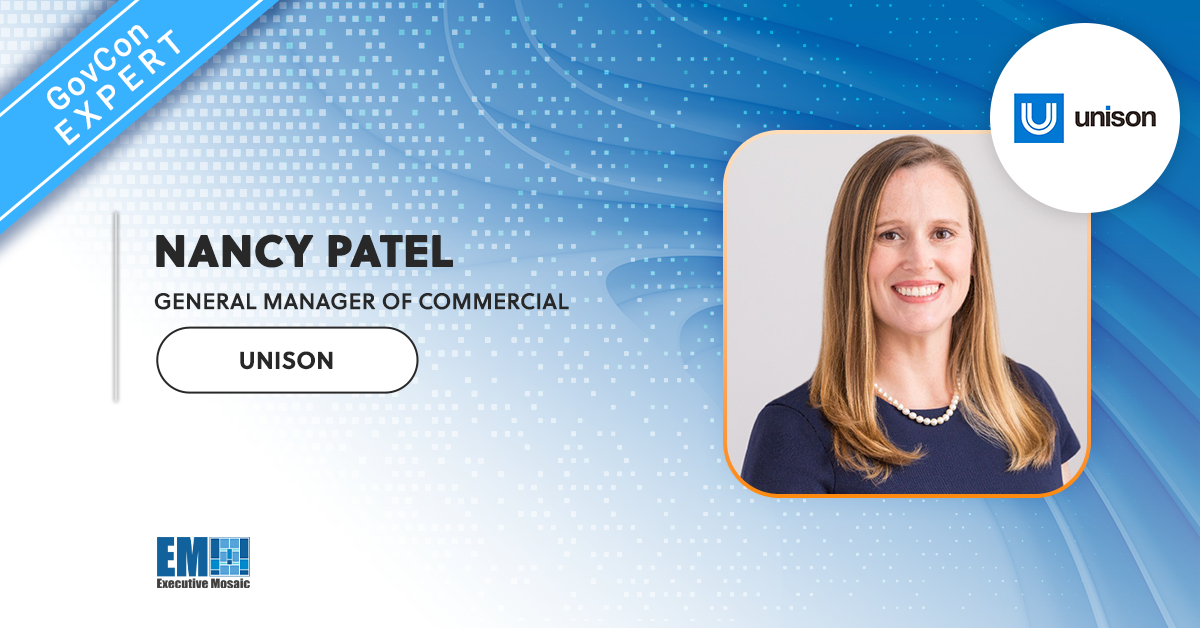By Nancy Patel, General Manager of Commercial at Unison
Effective management of contract data requirements lists, or CDRLs, is fundamental for government contractors to remain competitive. CDRLs specify the data and documentation a contractor must deliver, encompassing everything from technical manuals to progress reports. Traditionally, managing CDRLs has been challenging, often relying on manual processes and disparate systems that lead to inefficiencies, inaccuracies and delays. However, many GovCons have begun integrating CDRL management within their contract lifecycle management, or CLM system, creating an integrated solution that addresses these issues.
The complexity of CDRL management
CDRL management can be convoluted due to the diverse nature of the required data and the stringent timelines imposed by government contracts. Contractors must ensure that every piece of data is accurately tracked, managed and delivered on time. The margin for error is slim. Any lapse—no matter how small—can result in penalties, contract modifications, or even contract termination. These challenges require a concerted team effort across program management, program operations, contracts, finance and other business functions.
Traditional CDRL management faces several obstacles, including:
- Data fragmentation: Multiple departments often handle different segments of CDRLs, leading to fragmented data across various spreadsheets and systems. These silos make it challenging to maintain transparency, consistency and accuracy.
- Manual processes: Relying on manual processes for data entry, tracking and reporting increases the likelihood of human error. It also consumes significant time and resources, detracting from more strategic activities.
- Lack of real-time visibility: Without a centralized system, tracking the status of CDRLs in real-time is unlikely. This lack of visibility can result in missed deadlines and delayed submissions, adversely affecting project timelines and customer satisfaction.
- Inconsistent reporting: Generating performance reports manually can be erratic and time-consuming. This inconsistency obstructs identifying trends, addressing issues proactively and making informed decisions.
The impact of change
A typical GovCon managing CDRLs relies on manual processes and fragmented systems, which leads to inconsistencies, inaccuracies and delays. Organizations that modernize their approach can experience many benefits.
Here’s just a few:
- Centralized data input: Implementing a single input point for all CDRL data ensures uniformity and accuracy—eliminating the inconsistencies arising from multiple data sources.
- Automated notifications: Automatic reminders can be set up to alert employees responsible for CDRL creation and submission—streamlining workflows to ensure timely deliveries.
- Real-time reporting: With real-time access to CDRL statuses, including past-due, upcoming and unscheduled CDRLs, the organization can proactively manage and track its obligations—enabling visibility to address potential issues before they escalate.
- Submission and approval tracking: The ability to track the submission and approval status of each CDRL allows for proactive issue resolution—creating transparency so all stakeholders are aware of the status at any given time.
- Performance reporting: Automated performance reports provide valuable insights into trends and areas for improvement—empowering teams to make data-driven decisions to enhance processes.
- Access controls: Implementing role-based access controls ensures data security and integrity. Only authorized personnel can modify or access sensitive data—mitigating the risk of unapproved changes.
GovCons can improve data accuracy and consistency, reduce late deliveries and enhance customer satisfaction through centralized data input and automated notifications. Freed from manual tasks, employees can focus on strategic initiatives, boosting productivity. Real-time reporting ensures compliance and provides actionable insights for continuous process improvement.
Modernizing CDRL management: A blueprint for innovation
Integrating CDRL management within a CLM system fundamentally redefines how data requirements are managed and delivered, surpassing basic process improvements. This approach to CDRL management offers a blueprint for efficiency, accuracy and proactive management, making it a valuable model for others in the industry.
Some additional enhancements with this model are:
- Holistic risk management: Centralizing data and automating notifications reduces errors and mitigates risks associated with missed deadlines and non-compliance. Organizations can quickly identify and address potential risks by having a unified view of all CDRL-related activities before they escalate.
- Enhanced collaboration: A centralized system fosters better communication and collaboration across departments. Teams can easily access up-to-date information, reducing the silos that often plague large projects. This collaborative approach ensures all stakeholders are aligned and working toward common goals.
- Scalability: A robust CDRL management system can scale to meet increasing demands as organizations grow and take on more complex projects. A CLM system’s flexibility allows for adding new features and capabilities as needed, ensuring long-term sustainability and adaptability.
- Regulatory compliance: Staying compliant with evolving government regulations is a constant struggle. A centralized CLM system can be regularly updated to reflect changes in regulatory requirements, ensuring that all CDRLs meet current standards. This proactive compliance management helps avoid costly penalties and maintains the organization’s reputation.
- Strategic insights: Beyond day-to-day management, embedded CDRL management provides strategic insights through advanced analytics and reporting. Organizations can leverage these insights to refine their processes, forecast future needs, and make informed decisions that drive long-term success.
Setting a new industry standard
Full-scale CDRL management methods will be essential as government contracts become more complex. Adopting a centralized, shared and automated approach ensures compliance and precision, drives overall project success and strengthens a GovCon’s competitive position in the market. This shift toward more formal, efficient and strategic CDRL management sets a new standard for the industry, paving the way for improved operational performance and enhanced customer satisfaction.















